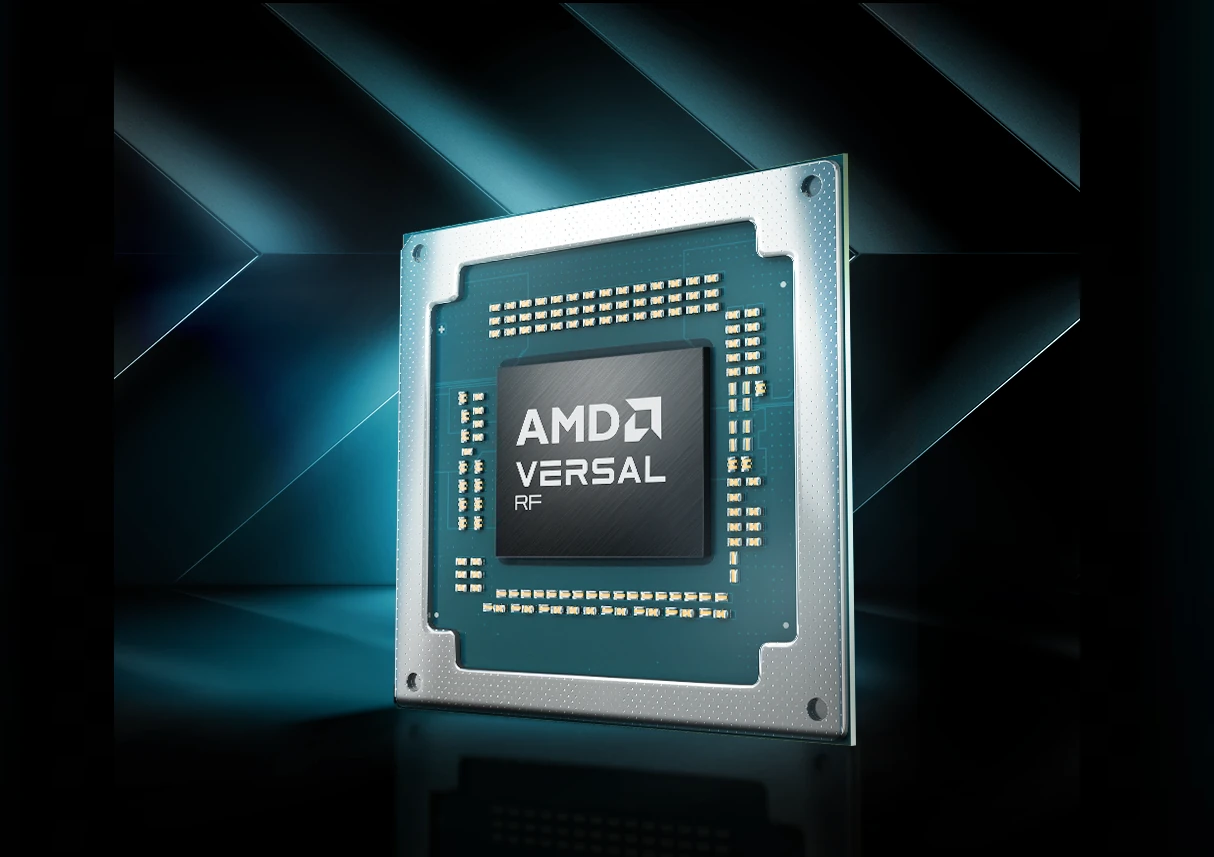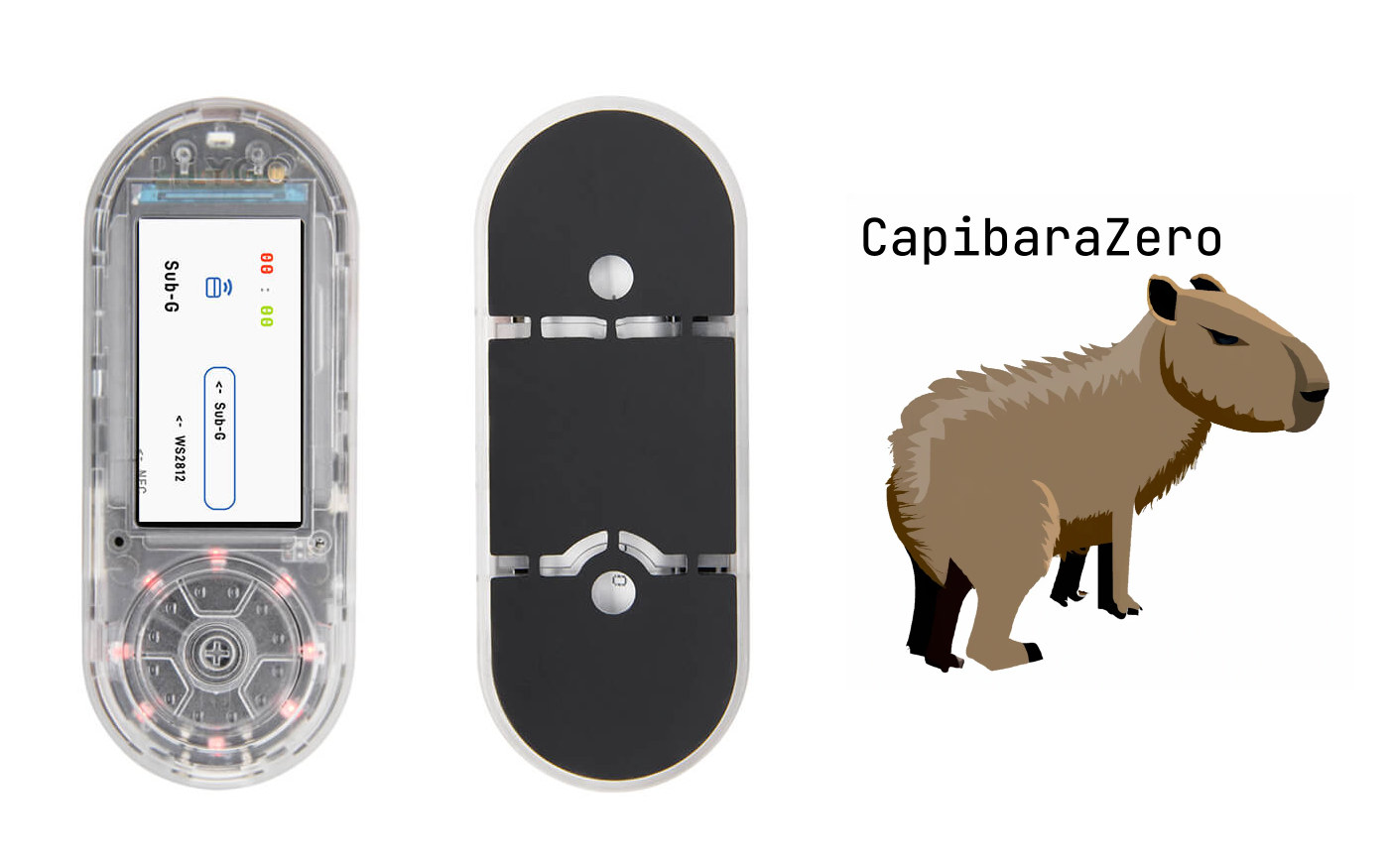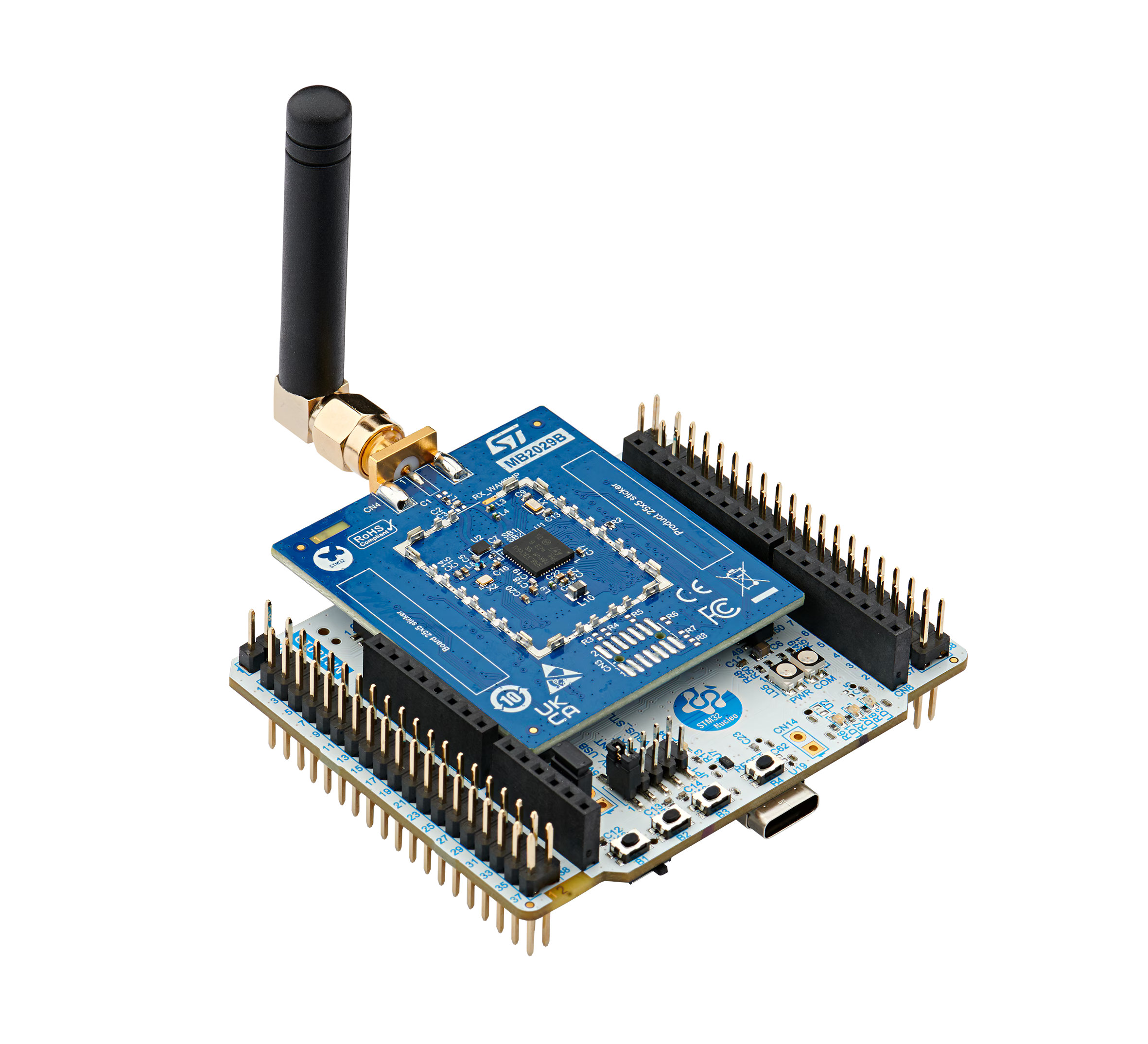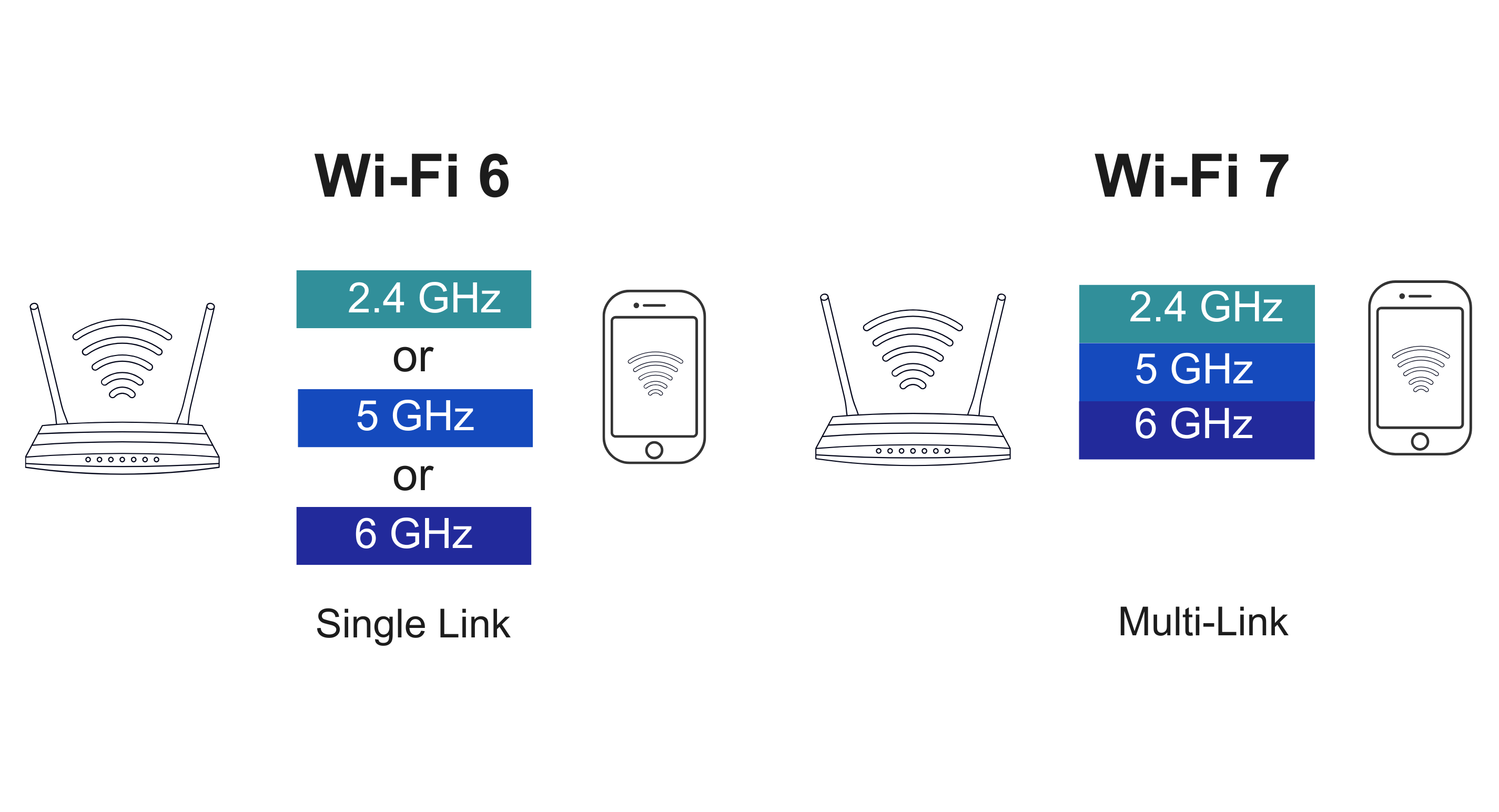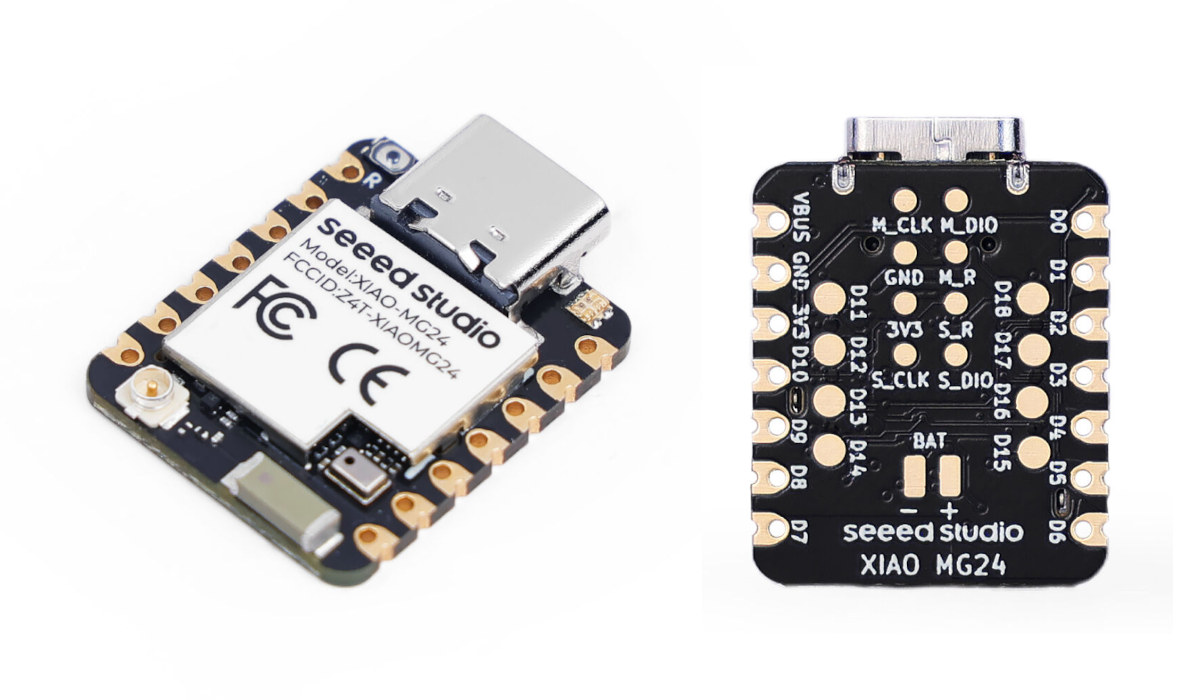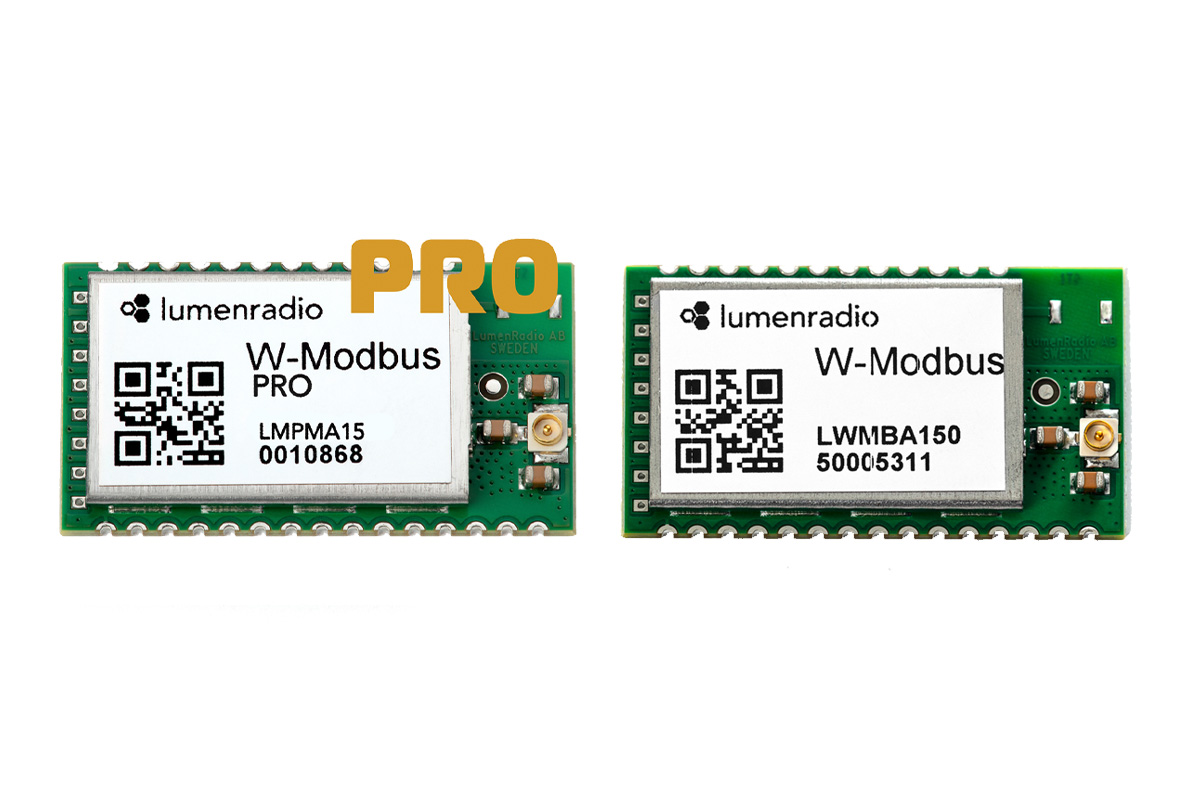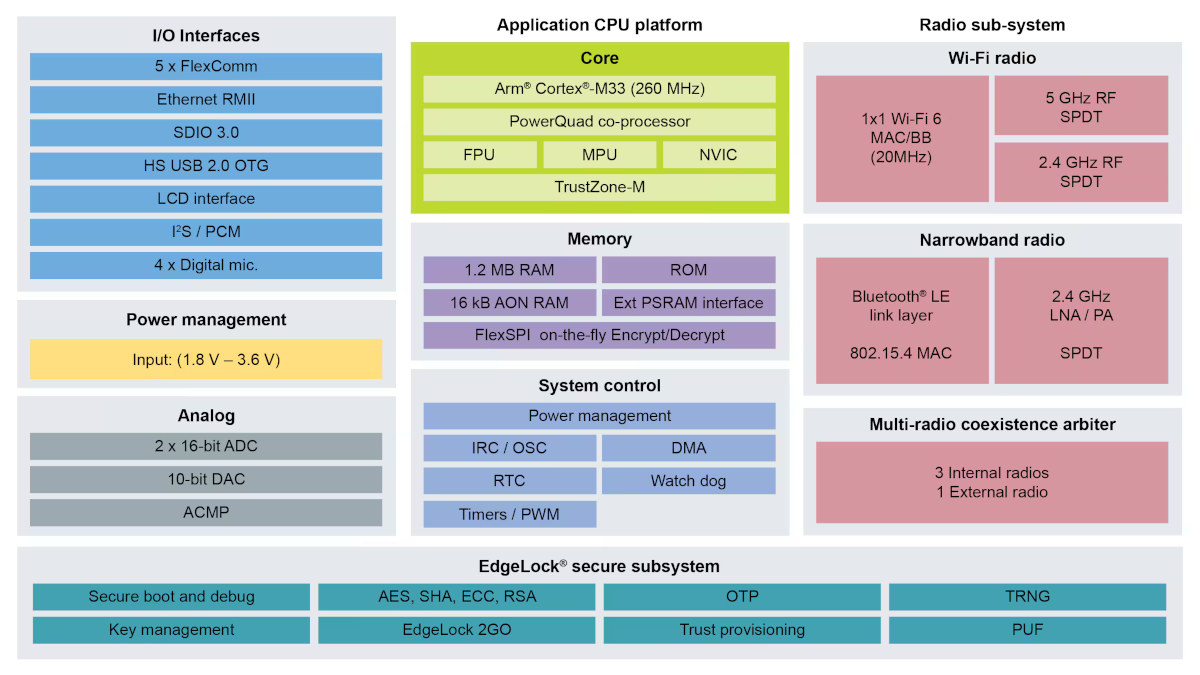AMD Versal RF series adaptive system-on-chips (SoCs) combines Arm Cortex-A72 and Cortex-R5F hard cores with FPGA fabric and direct radio frequency (RF)-sampling data converters for pre-6G systems, wireless 6G testers, aerospace and defense applications like radars, and electronics test equipment such as multi-channel testers, oscilloscopes, and wideband spectrum analyzers. Built upon the Xilinx Zynq RFSoC devices, the AMD Versal RF Series supports wideband-spectrum with high-resolution thanks to up to sixteen 18 GHz, 14-bit RF ADCs with up to 32 GSPS and sixteen 14-bit RFV DACs up to 16 GSPS, and delivers 80 TOPS of DSP performance in a size, weight, and power (SWaP)-optimized design. The chips also integrate hard IP such as DDR5 memory controllers, 600 Gbps Ethernet, PCIe Gen5 x4, and various high-speed transceivers. AMD Versal RF Series adaptive SoCs key features and specifications: Processing System Application Processing Unit (APU) – Dual-core Arm Cortex-A72 with 48 KB/32 KB L1 […]
CapibaraZero firmware enables low-cost Flipper Zero alternatives based on ESP32-S3 hardware
CapibaraZero open-source firmware aims to offer a low-cost alternative to Flipper Zero for ESP32-S3-based hardware platforms and soon other gizmos with ESP32 wireless microcontrollers, notably the LilyGO T-Embed CC1101, similar to the original T-Embed with ESP32-S3 WiSoC, but also featuring a Texas Instruments CC1101 Sub-GHz microcontroller and an NXP PN532 NFC/RFID module. The Flipper Zero is a popular portable multi-tool for pentesters and hardware hackers based on STMicro STM32WB55 Bluetooth 5 LE & 802.15.4 wireless microcontroller and a TI CC1101 Sub-Ghz MCU that got involved in controversies such as a ban proposal in Canada last year due to its (dubious) potential use for car theft. Since then we’ve seen several alternatives such as Monstatek M1 (that’s yet to be delivered to backers…) and HackBat open-source hardware with Raspberry Pi RP2040, ESP8266 WiFi module, and the CC1101 RF transceiver. The CapibaraZero firmware offers another way to create your own cheap Flipper […]
STMicro NUCLEO-WL33CC1 and NUCLEO-WL33CC2 boards features STM32WL33 Cortex-M0+ Sub-GHz wireless MCU
STMicro unveiled the STM32WL3 sub-GHz wireless MCU family last year and has now announced the general availability of the STM32WL33 Arm Cortex-M0+ microcontroller, along with two development boards namely the NUCLEO-WL33CC1 and NUCLEO-WL33CC2 for battery-powered smart meters and smart building and industrial monitoring solutions using wireless M-Bus, Sigfox, WiSun, LoWPAN or Mioty LPWAN protocols among others. The NUCLEO-WL33CC1 and NUCLEO-WL33CC2 development boards look the same, but the former supports 826-958 MHz high-band frequencies, while the latter handles 413-479 MHz low-band frequencies. STMicro NUCLEO-WL33CC1/2 specifications: SoC – STMicro STM32WL33CCV6 MCU Core – Arm Cortex-M0+ up to 64 MHz Memory – 32KB SRAM with full retention Storage 256KB flash 1 KB OTP flash (user data) Sub-GHz Wireless 413-479 MHz or 826-958 MHz frequency bands with OOK, ASK, 2(G)FSK, 4(G)FSK, D‑BPSK, and DSSS modulations Compatible with proprietary and standardized wireless protocols such as WM-Bus, Sigfox, Mioty, KNX-RF, and IEEE 802.15.4g Low-power autonomous wake-up […]
Compex Systems Unveils Wi-Fi 7 Modules with Smart Connectors, Enabling Seamless Multi-Link Operation (MLO) Integration on Conventional CPU Platforms (Sponsored)
Compex Systems (Compex), a global leader in wireless communication technology, is taking Wi-Fi 7 to new heights with an innovative connector design for Multi-Link Operation (MLO). This breakthrough enables seamless deployment of MLO across off-the-shelf platforms, including those with Intel x86 and ARM processors (e.g. NXP and Marvell), eliminating the need for custom-made host boards and unlocking the full potential of Wi-Fi 7 features for a wider range of users and applications. Multi-Link Operation (MLO) is a key performance advantage of Wi-Fi 7 (802.11be), setting it apart by allowing the routing and aggregation of throughput across multiple radio links in different frequency bands. It enables data to be routed through the least congested links, improving overall latency and reliability. MLO can also aggregate bandwidths from more than one wireless link, enhancing throughput and network performance. It is ideal for bandwidth-intensive and real-time applications such as 4K/8K video streaming, cloud gaming, […]
Seeed Studio’s XIAO MG24 and XIAO MG24 Sense boards target battery-powered Matter and BLE applications
Seeed Studio has added two members to its XIAO family of tiny MCU boards with the XIAO MG24 and XIAO MG24 Sense boards based on Silicon Labs EFR32MG24 multi-protocol wireless SoC and designed for battery-powered Matter over Thread and Bluetooth LE 5.3 applications. Both 21×17.8 mm USB-C boards feature a 78MHz Silabs MG24 Cortex-M33 microcontroller with 256kB SRAM and 1536KB flash, an additional 4MB SPI flash on-board, and 22 pins and pads for GPIO pins, analog inputs, and power signals, plus a reset button and two LEDs. The “Sense” model adds an analog microphone and a 6-axis IMU sensor. XIAO MG24/MG24 Sense specifications: SoC – Silicon Labs EFR32MG24 (EFR32MG24B220F1536IM48-B) MCU cores Arm Cortex-M33 @ 78.0 MHz with DSP instruction and floating-point unit for user application Arm Cortex-M0+ core for wireless Memory – 256 KB RAM Storage – 1536 KB flash Wireless protocols – Matter, OpenThread, Zigbee, Bluetooth Low Energy 5.3, […]
Siterwell wired and wireless smoke alarms offer low false alarm rate, high precision detection (Sponsored)
Siterwell wireless and wired smoke and carbon monoxide (CO) alarms offer a low false alarm rate and high precision detection thanks to a maze design, dual-wavelength light technology, and AI-powered scene learning. Siterwell is a high-tech enterprise that provides integrated solutions across various fields, including smart security, smart home, and smart city based on IoT technology and security products. They are committed to advancing home safety with innovative and efficient solutions. Siterwell smoke alarms specifications and highlights: High-precision detection with an alarm accuracy of 99.96% Design optimized to decrease the number of false alarms with Maze design/micro-mesh design to reduce interference from other particles such as mosquitoes/dust/smoke particles Dual-wavelength light detection to accurately detect smoke from both fast-burning and smoldering fire Mechanical creep simulation, mechanical impact simulation, air-fluid dynamics simulation, and optical modeling to prevent false alarms while cooking AI-powered scene learning – Upon activation, the device begins to learn […]
LumenRadio’s nRF52840 based Wireless Modbus module aims to simplify Modbus RTU installations
LumenRadio has recently introduced a Wireless Modbus (W-Modbus) module built around Nordic Semiconductor’s nRF52840 SoC. The module can connect up to 100 nodes, integrates a power amplifier with 100mW transmission power, and supports Bluetooth LE for smartphone connectivity. These features simplify Modbus RTU installations by eliminating traditional control cables, making them ideal for building and industrial automation applications. The company mentions two variants available for this module the ‘W-Modbus OEM Module’ which supports one Modbus client, and the ‘W-Modbus PRO OEM Module’ supporting up to sixteen Modbus clients. Both modules support self-healing, self-organizing mesh protocols that address the issues of network reliability and scalability in industrial environments. The module can also be used for remote monitoring and troubleshooting via smartphones. LumenRadio’s Wireless Modbus module specification Module – LumenRadio W-Modbus module SoC – Nordic Semiconductor nRF52840 CPU – 32-bit Cortex-M4 core with FPU @ 64 MHz Connectivity Bluetooth 5.4 (BLE, Bluetooth mesh, […]
NXP RW612 Arm Cortex-M33 Wireless MCU offers Wi-Fi 6, Bluetooth 5.4, and 802.15.4 radios
The NXP RW612 is an Arm Cortex-M33 SoC with three radios, namely WiFi 6, Bluetooth 5.4, and 802.15.4 for Thread and Matter connectivity. It also has a small sibling called the RW610 without the 802.15.4 radio. I first came across RW61x chips, when Debashis wrote about the Trimension SR250 UWB chip mentioning it can work with “host processors like NXP’s i.MX, RW61x, and MCX families”. I initially thought it was a typo for the iW612 tri-radio solution introduced in 2022, and the RW612 is indeed similar, but it’s a complete wireless microcontroller/SoC with an Arm Cortex-M33 application core so it can be used independently as a host instead of a companion chip. NXP RW612 and RW610 specifications: MCU sub-system Core – 260 MHz Arm Cortex-M33 with TrustZone-M Memory On-chip 1.2 MB SRAM PSRAM interface for memory expansion Storage – Quad FlexSPI Flash XIP with on-the-fly decryption Peripheral interfaces Up to […]


